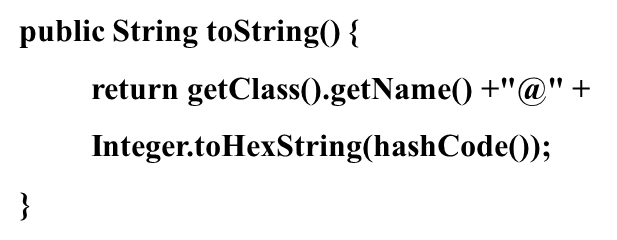Java的动手动脑(五)
日期:2018.11.1
星期四
博客期:021
Part1: 运行代码

1 class Grandparent 2 { 3 public Grandparent() 4 { 5 System.out.println("GrandParent Created."); 6 } 7 public Grandparent(String string) 8 { 9 System.out.println("GrandParent Created.String:" + string); 10 } 11 } 12 13 class Parent extends Grandparent 14 { 15 public Parent() 16 { 17 //super("Hello.Grandparent."); 18 System.out.println("Parent Created"); 19 //super("Hello.Grandparent."); 20 } 21 } 22 23 class Child extends Parent 24 { 25 public Child() 26 { 27 System.out.println("Child Created"); 28 } 29 } 30 31 32 33 public class TestInherits 34 { 35 public static void main(String args[]) 36 { 37 Child c = new Child(); 38 } 39 40 }
运行结果如下:

运行结果说明:java的构造方法与C++的构造函数的构造顺序相同!它的构造也是从上到下的(由基类开始构造)!而且顺序不可变,这个问题我们一会儿会再提到!其实就是构造方法实际上就是给类的对象一个初始化的方法!如果我们先初始化子类的方法,子类的方法要调用父类的数据成员,这不就尴尬了吗?你让人家子类上哪儿去找啊?所以顺序就认为规定不变,即使你这个父类是个“空类”(实际上Java的类中是不存在空类的)。
Part2: 运行代码

1 package Test; 2 public class ExplorationJDKSource { 3 4 /** 5 * @param args 6 */ 7 public static void main(String[] args) { 8 System.out.println(new A()); 9 } 10 11 } 12 13 class A{}
运行结果如下:

运行结果说明:其实之所以我们的类可以做到输出,是因为除Object类以外,我们的写每一个类,都是有它的父类的,默认继承Object类!所以Object类里的方法名称都得到了继承!而System.out实际上是Object的一个子类PrintStream,而这个子类内部定义了一个public static void println(String ...);的方法传进来的大类参数就会调用父类的toString方法,改成String类型并输出。而该方法如下:

而其中的hashCode()是本地的方法,用于生成随机数!
Part 2.5: 顺便说一下今天学到的判断类型的方法!
Object hello = "Hello,酷狗!";
(hello instanceof Math) 这一部分返回boolean类型的值;返回hello是否属于Math类型的值!
Part 3: 运行代码

1 public class ParentChildTest { 2 public static void main(String[] args) { 3 Parent parent=new Parent(); 4 parent.printValue();//Parent.printValue(),myValue=100 5 Child child=new Child(); 6 child.printValue();//Child.printValue(),myValue=200 7 8 parent=child; 9 parent.printValue();//Child.printValue(),myValue=200 10 11 parent.myValue++; 12 parent.printValue();//Child.printValue(),myValue=200 13 14 ((Child)parent).myValue++; 15 parent.printValue();//Child.printValue(),myValue=201 16 17 } 18 } 19 20 class Parent{ 21 public int myValue=100; 22 public void printValue() { 23 System.out.println("Parent.printValue(),myValue="+myValue); 24 } 25 } 26 class Child extends Parent{ 27 public int myValue=200; 28 public void printValue() { 29 System.out.println("Child.printValue(),myValue="+myValue); 30 } 31 }
运行结果:

运行结果说明:我们先肯定一点——就是说一定是只有子类或它自己可以直接初始化父类!强制类型转换也是如此!只能将子类强制专成父类,其他的转型要通过类的成员方法来完成!这里可能不太好懂,那我就仔细的逐句给大家分析一下!首先!类文件我们就跳过了!(-v-!)嗯,这两个类文件就是初始化,也没什么难处!而且前两个printValue()方法应该也没有什么疑问!就是调用自己方法嘛!我们可以清楚的知道子类覆盖了父类的方法,所以调用还是调用的自己的!parent=child;这句是把child初始化parent的!就是拿child的数据来初始化parent!自然parent.printValue(); 一句调用方法,也就是调用子类方法!再说一下就是当前类型是什么,调用的就是哪个数据!现在child已经赋值给parent了,再运行自然显示200,而parent.myValue++;一句加的是parent所在的value而不是child的,所以200不变;再然后是把parent转成了Child类型,之后再调用value就是子类的value了,这样++语句就会生效,进而得到了一个201的结果。





 浙公网安备 33010602011771号
浙公网安备 33010602011771号